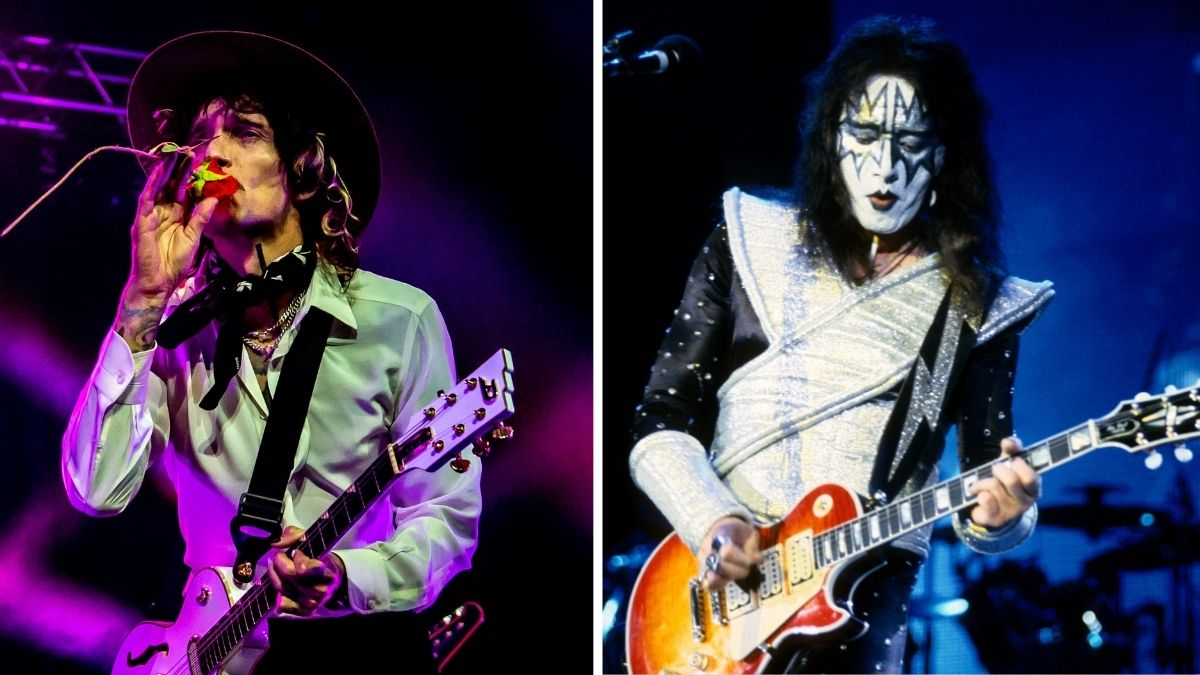Best guitar pedals for beginners 2025: kickstart your pedalboard
Don't know your RAT from your Whammy? Your Tube Screamer from your Big Muff? We're here to help you take your first steps into the world of guitar effects
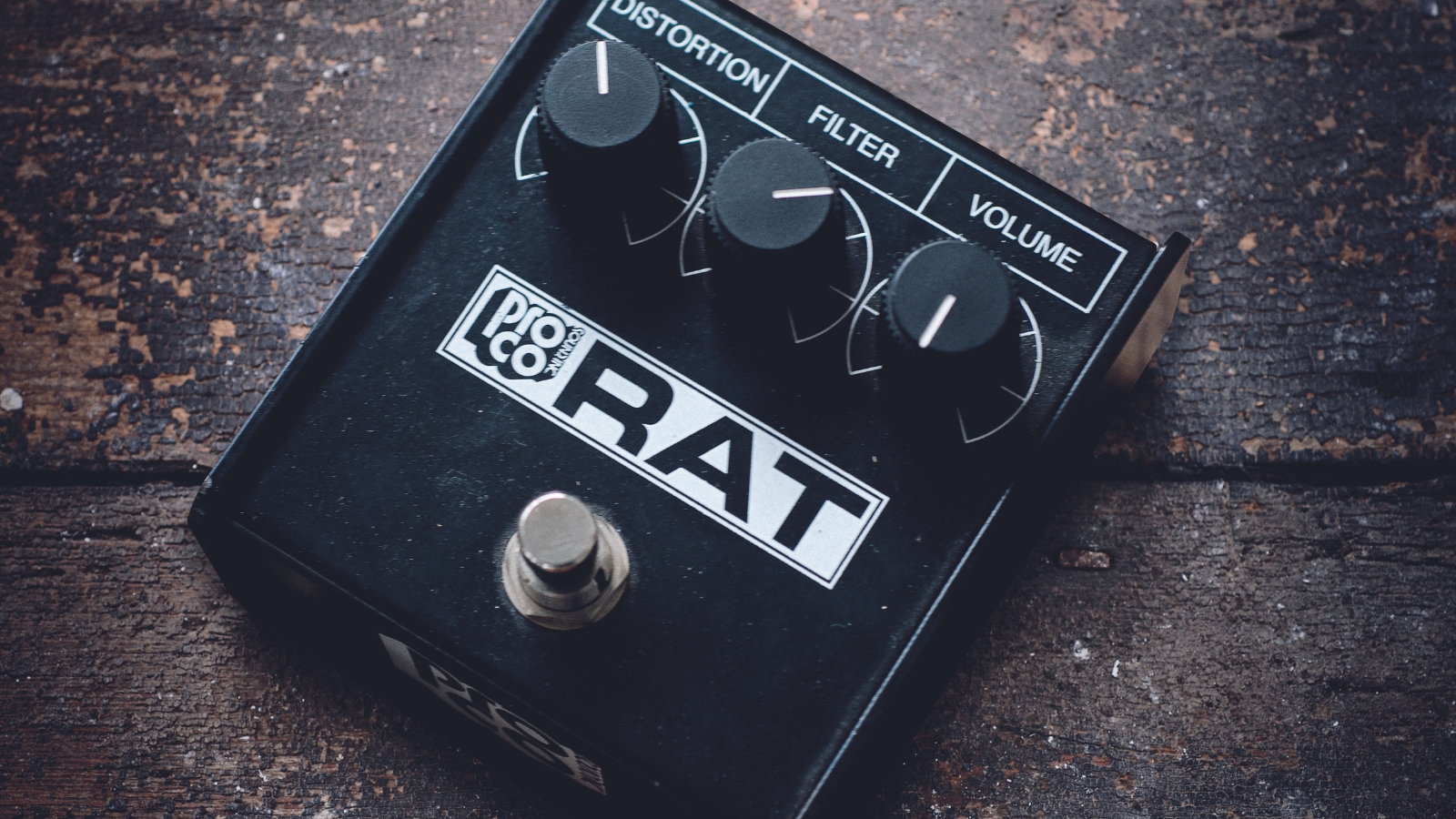
1. Our top picks
2. Full product guide
3. Buying advice
4. How we choose products
There is a bewildering array of guitar pedals out there at the moment and for a newcomer, it can be overwhelming trying to find the right pedal to go for. To help those who are new to the world of pedals, we decided to utilize the expertise of our writing team to put together a guide to the best guitar pedals for beginners.
Pedals come in all shapes and sizes, with varying effects on your guitar tone from subtle to stratospheric. You can use them to add some color to your tone or to change the sound of your guitar to something entirely different. Using pedals is a form of sound design, and there's a lot of depth available when you start combining different flavors of effect to make something totally unique.
If you're new to pedals we'd highly recommend checking out our buying advice section which features lots of common questions answered by our expert writing team of guitar players. If you already know your stuff and just want to see our top picks, then just keep scrolling
Best guitar pedals for beginners: Our top picks
If you’re buying for the first time, then there are three main pedal choices we’d recommend for your first. First up, and arguably the least exciting, is a tuner pedal. A tuner pedal is the first on any professional guitar player’s pedalboard and it shouldn’t be different for a beginner. The Boss TU-3 Chromatic Tuner will do a brilliant job at this, giving you accurate tuning as well as acting as a mute switch when you need it to.
Next up we’d go for an overdrive or distortion pedal depending on your taste. If you like blues or classic rock, look at an overdrive pedal like the Ibanez Tube Screamer. If you prefer things a little heavier, then a distortion pedal is the way to go, something like the ProCo RAT 2 which will give you a heavy, distorted tone. If you prefer the sound of psychedelic or alternative rock, then a fuzz pedal like the Electro-Harmonix Nano Big Muff will be just the ticket.
Finally, we’d get a delay pedal as our third choice. Delay is an incredibly versatile effect, as you can use it to elevate your tone with a short delay setting, or give your guitar a spacious ambient tone on longer delay settings. For us, the Boss DD-3T is a fantastic choice for the beginner player, offering a variety of settings and sounds that will help your playing and performance immensely.
Best guitar pedals for beginners: Product guide
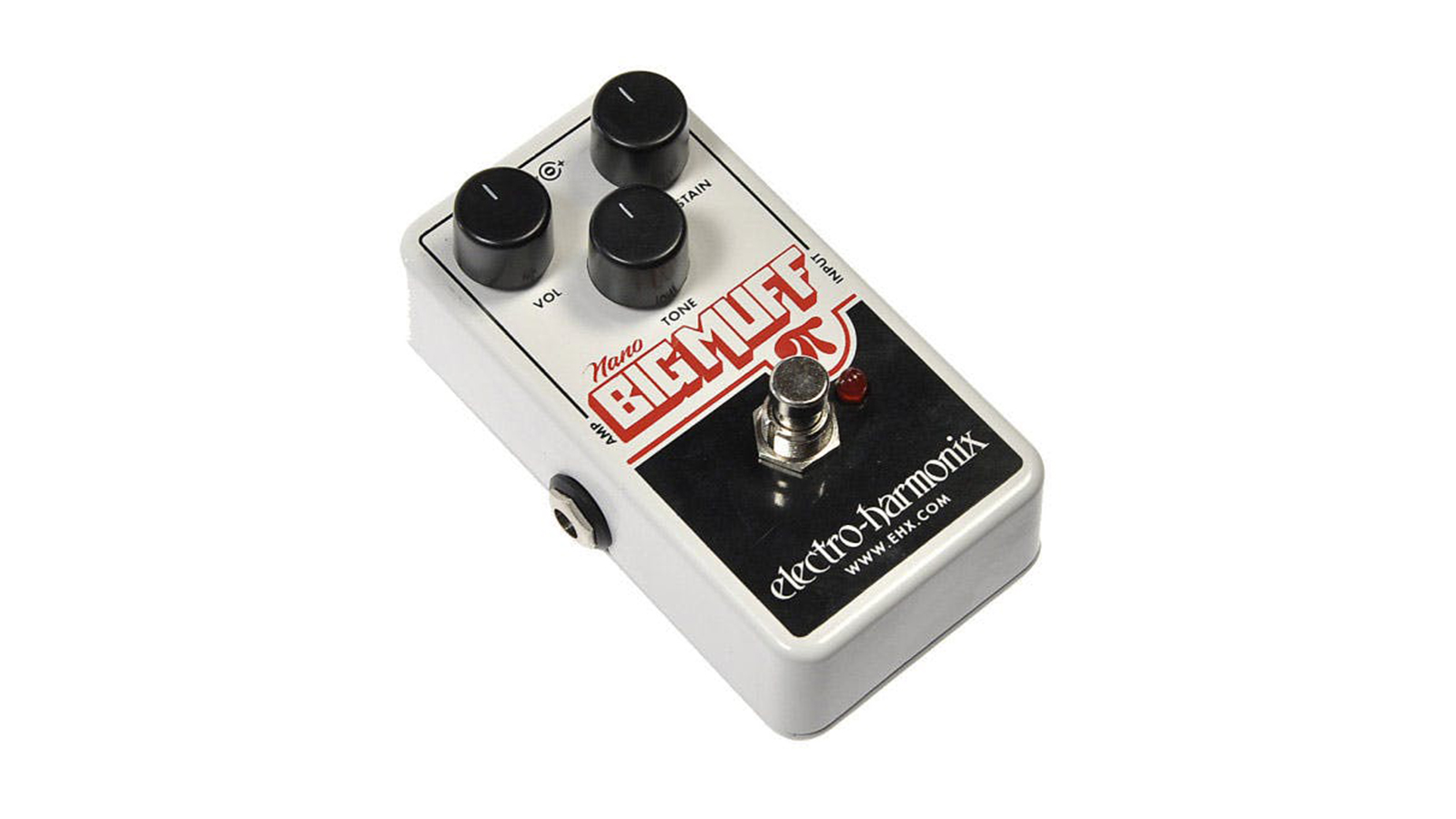
1. Electro-Harmonix Big Muff Nano fuzz pedal
Our expert review:
Specifications
Reasons to buy
Reasons to avoid
Memorably described to us by one guitarist as a 'hoover', the Big Muff has been modded, cloned, reissued, rebuilt, and redesigned more than almost any other pedal in existence. With a distinctive 'scoop' in the guitar mids, the Muff can mean that you get lost in a band mix – it's like the anti-Tube Screamer in terms of EQ profile – but when it works, there's little else that has the same visceral impact.
Very broadly speaking, there's about five main versions – although, in total there are over thirty versions by our count, with passionate fans of each - and it's on these that the current crop of EHX Big Muffs are based.
The most common is the NYC Muff, which is available as the Nano Big Muff, while there's also several others; the Ram's Head, Triangle, Op Amp, and Russian. We could go on about them for days, but the lowdown is this – the Russian is more 'woolly', think Sonic Youth's 100%; the Op Amp is more compressed, and the version that Smashing Pumpkins used on their classic Siamese Dream LP; the Ram's Head is closer to a Dinosaur Jr., type tone; the Triangle is more old-school, a bit smoother and more articulate than the NYC to our ear.
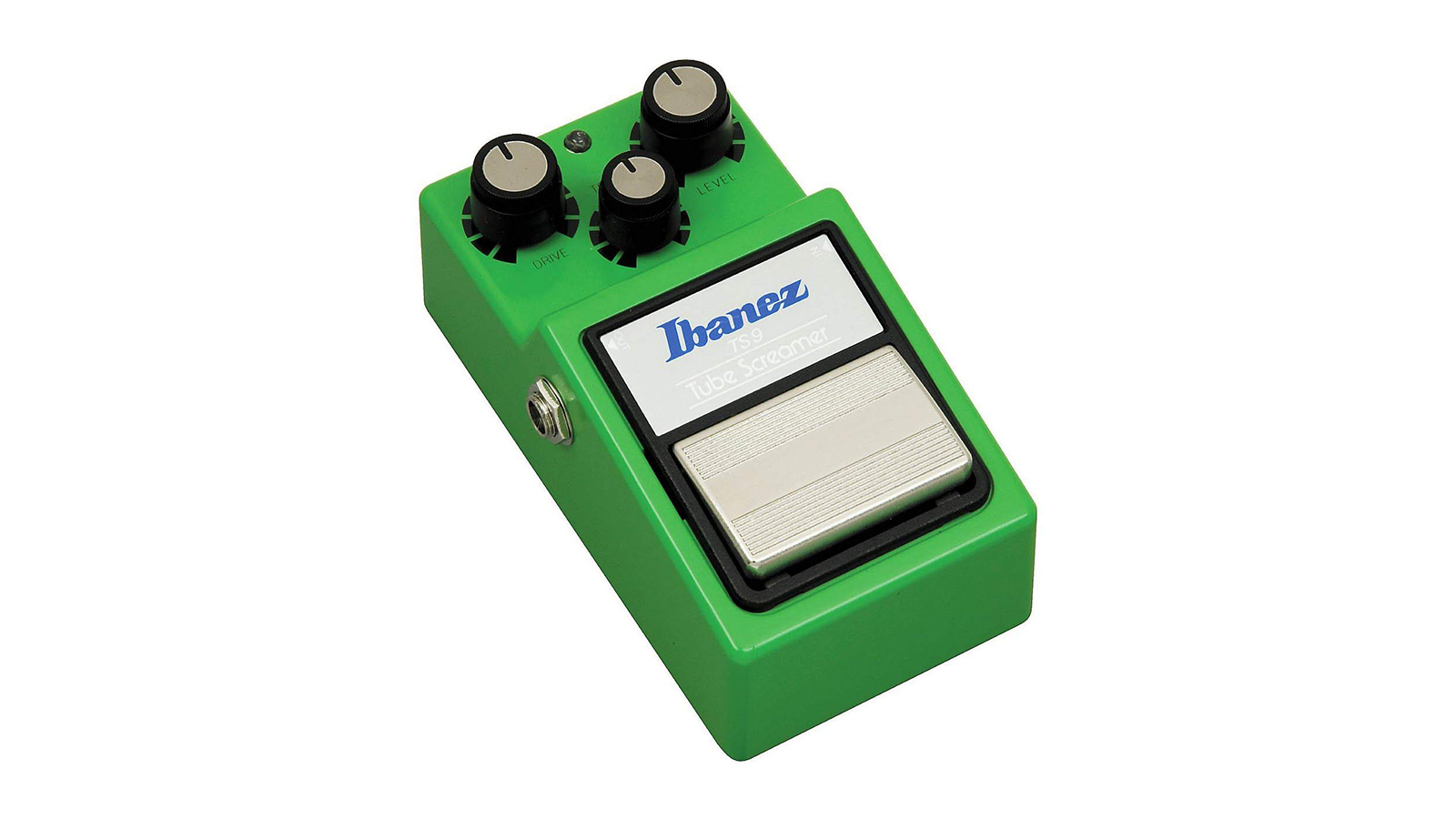
2. Ibanez TS9 Tube Screamer
Our expert review:
Specifications
Reasons to buy
Reasons to avoid
The original overdrive pedal, the Tube Screamer and its descendants still represent a significant percentage of the worldwide pedal market just on their own.
There's a reason for this, of course – not just that it's a versatile drive with a wide range of operation that allows it to be used for everything from blues to metal. Its other strength is its EQ profile, which emphasizes the guitar's midrange around 1kHz, meaning it suddenly 'pops' in a band mix, either live or in the studio.
Moreover, if you turn the drive control down and the level up, it functions as a boost, and it's for this function that many guitarists acquire one. If you're lucky enough to have a decent tube amp, or access to one, boosting a tube amp with a Tube Screamer is likely to be better than almost any overdrive pedal on the market.
There's a difference between this, the TS9, and the original TS808, but for all the essays that have been written on the subject they're similar enough that a recommendation for one can be a recommendation for the other, nine times out of ten. If you’re looking to save some cash, the Ibanez TS Mini Tube Screamer is worth looking at too.
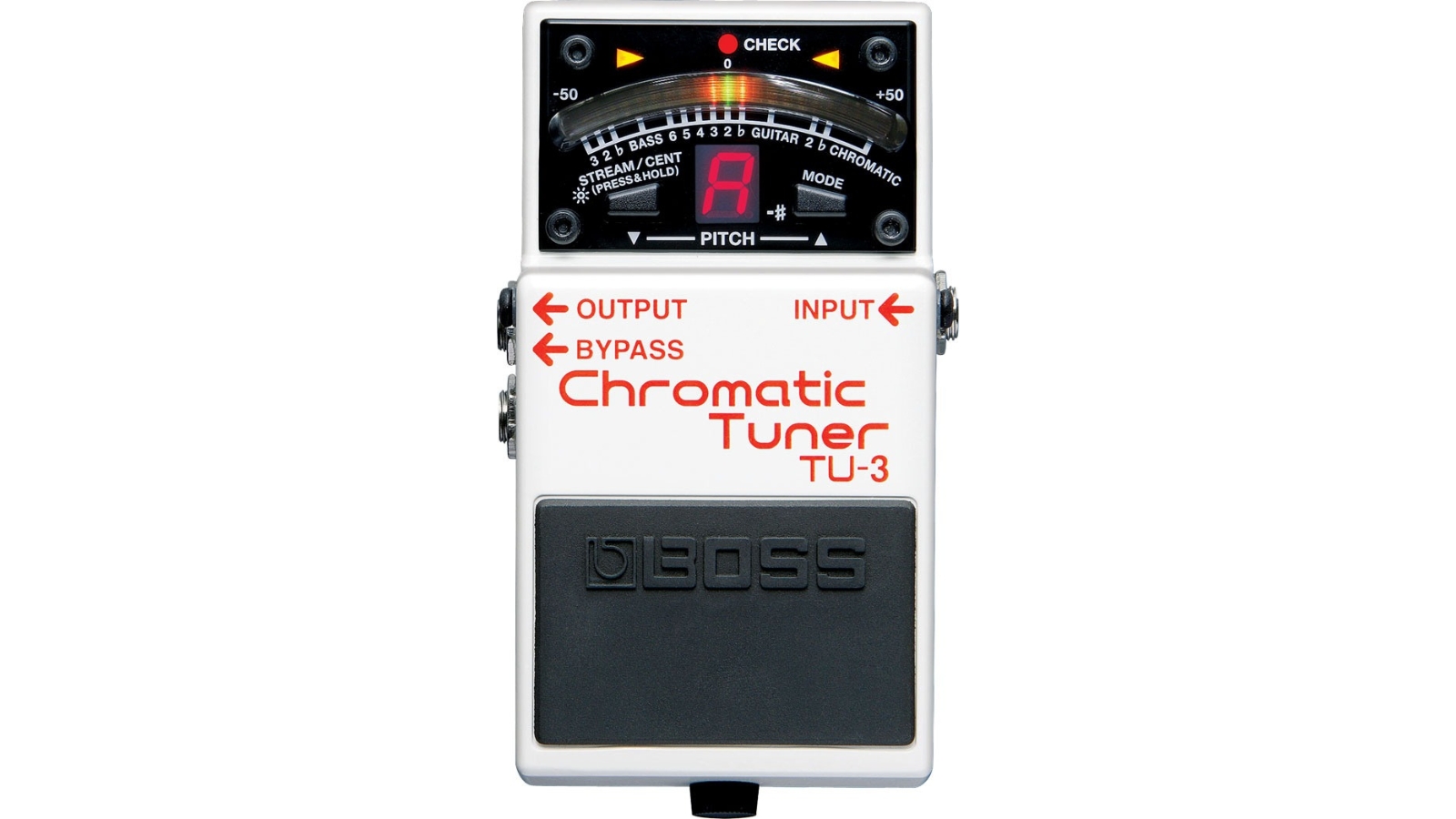
3. Boss TU-3 Chromatic Tuner
Our expert review:
Specifications
Reasons to buy
Reasons to avoid
If you’re going to get any pedal as a guitar player, we heartily recommend starting with a tuner and there’s nothing quite as omnipresent as the Boss TU-3 Chromatic Tuner. You’ll find this white stompbox on countless professional boards thanks to its rugged build and reliable performance.
Accurate to within one cent, the super clear display lets you see your note in all conditions, whether you’re playing in your room or on a dimly lit stage. It’ll tune pretty much anything too, with electric guitars, acoustic guitars, and bass guitars all being fair game. It also mutes your signal automatically when it’s on, so no one has to hear you tuning up.
Boss pedals are ruggedly built and many players who have their first Boss TU pedal still use it to this day. It’s the kind of pedal that you likely won’t ever have to replace, which makes it a sound investment for a beginner guitar player.
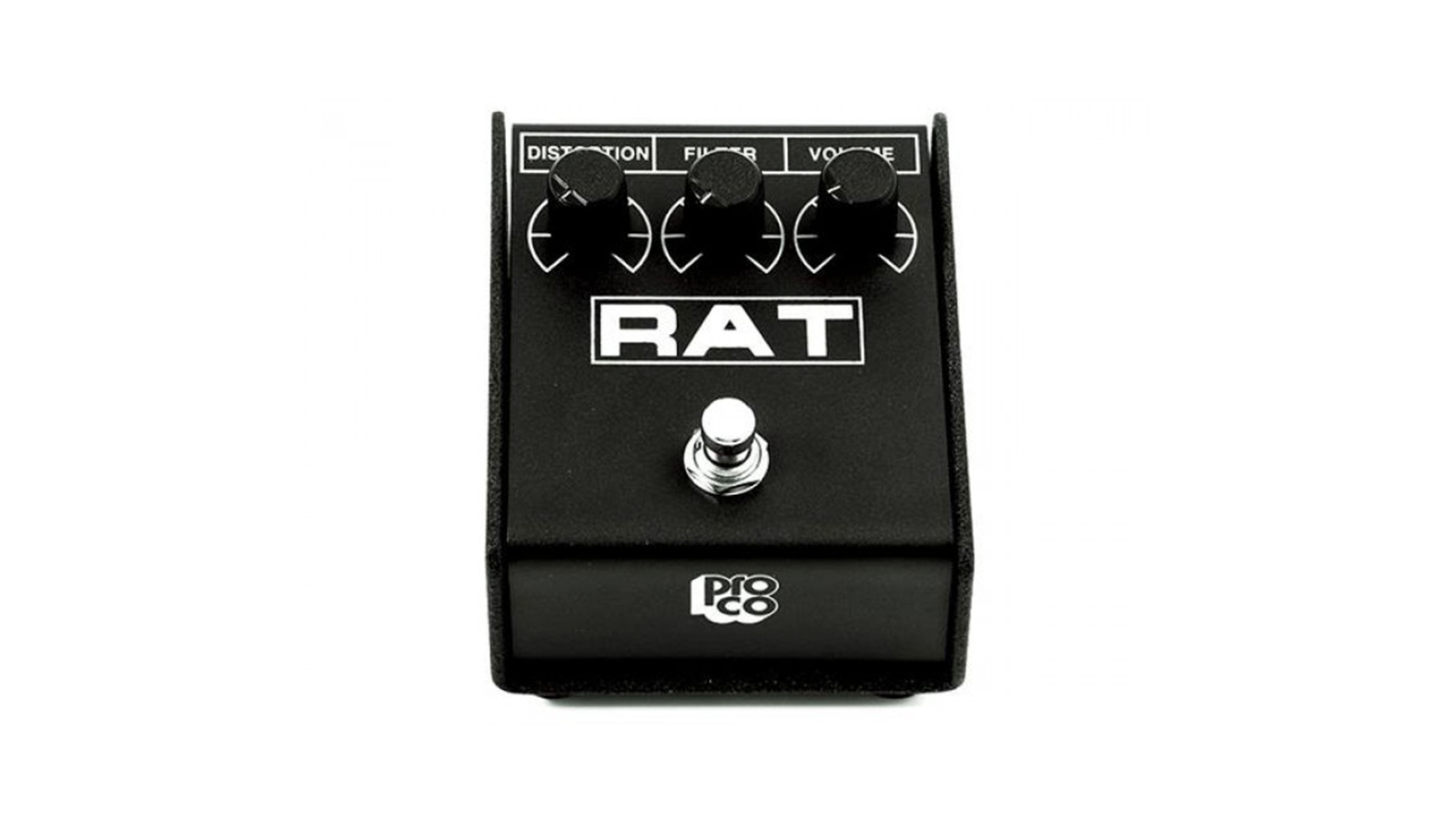
4. ProCo RAT 2
Our expert review:
Specifications
Reasons to buy
Reasons to avoid
One of the first, and still most recognizable distortions, the ProCo RAT got its unique distortion sound from its LM308 op-amp internally clipping the signal into a triangular shape.
Though that's the secret of the RAT's tone, most distortions that followed emulated another part of the RAT's circuit – its two so-called 'hard clipping' diodes, which also distinguished the harder, more punchy distortion pedals from softer overdrives like the Ibanez Tubescreamer.
Rightly a classic, RATs are nevertheless not that expensive, and remain accessible to beginners that want a huge, punchy distortion sound. More than that, the RAT also works well at lower gain settings, especially into tube amps that already have a bit of dirt on the go. They're a surprisingly versatile distortion pedal and it's hard to go too wrong.
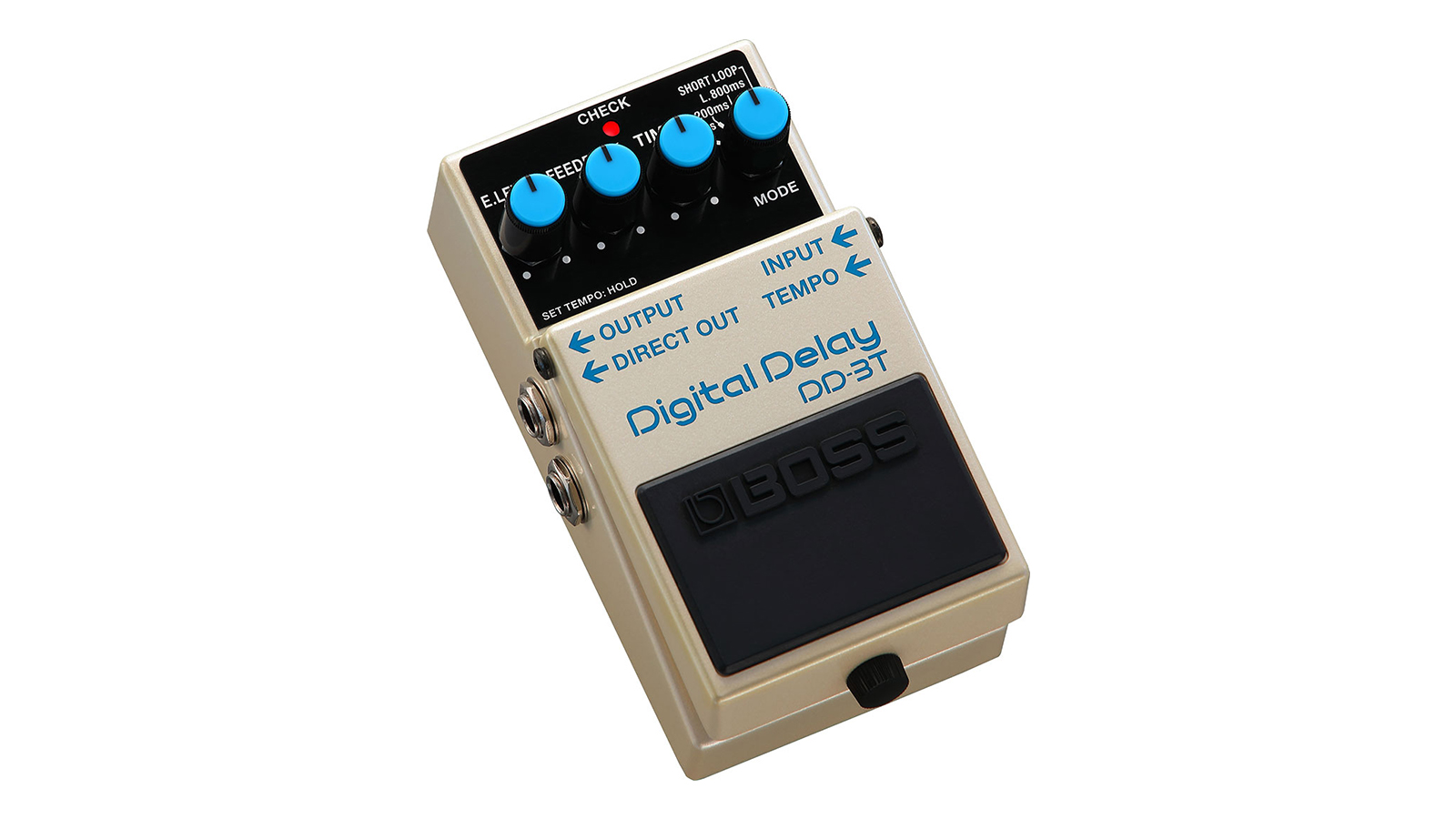
Specifications
Reasons to buy
Reasons to avoid
The Boss DD-3 has been the gold standard for digital delays ever since its introduction in 1986, and members of the DD series have been used on records by bands as diverse as The Cult, Melt Banana, Tool and Radiohead. So many players have made the white-and-blue box their own that it's probably quicker to list the players that haven't owned a DD-series delay at some point.
For a digital delay, the DD-3 has a very pleasant character, bedding down well into a band mix while retaining enough of that pristine, digital feel that it 'chimes' in a way that analogue delays don't, cutting through the top end of a mix.
The DD-3T is the most modern incarnation of this classic pedal, adding tap tempo to an already formidable platform.
Read the full Boss DD-3T review

6. Dunlop Cry Baby wah pedal
Our expert review:
Specifications
Reasons to buy
Reasons to avoid
The Cry Baby has become synonymous with 'wah pedal' to the extent that most new players are probably best served by checking out this wah before any others, as it's more than likely the pedal that's been used on all your favorite records.
Wah pedals can be incredibly expressive as you can manipulate the sound on the fly and the Cry Baby is fantastic at that. Utilized by guitarists like Hendrix, Claptop, and Dave Gilmour it's a brilliant choice for your first wah pedal.
That said, it's not without its problems. It's notorious for 'tone suck' and the design is very long-in-the-tooth. Granted, there's not a huge amount of innovation possible in terms of core wah sounds other than frequency ranges, but there are wah pedals with more options and flexibility.

7. Ibanez Analogue Delay Mini
Our expert review:
Specifications
Reasons to buy
Reasons to avoid
Digital delays are reliable and produce pristine, accurate delays, but that might not be desirable. For some types of music a bit of darkness and dirt can add character, and this is why the technologies that preceded the digital delay have never quite gone out of fashion.
One of these was the tape delay, exemplified by the Echoplex and Roland Space Echo, but these vintage units are expensive and difficult to maintain. The other technology was analogue delay. This relied on arrays of capacitors to delay the sound, and came with its own artifacts – a certain degree of grit, and roll-off of higher frequencies.
Not only do these qualities have some aesthetic value, but they're also reasons that analogue delays often bed better into a mix.
However, because of the chips used being comparatively expensive, analogue delays were for a while out of the reach of budget-conscious players, whereas now there's a variety of options, like this great mini unit from Ibanez, or other pedals like the EHX Memory Toy. We've chosen this for the warm character of its repeats and great form factor.
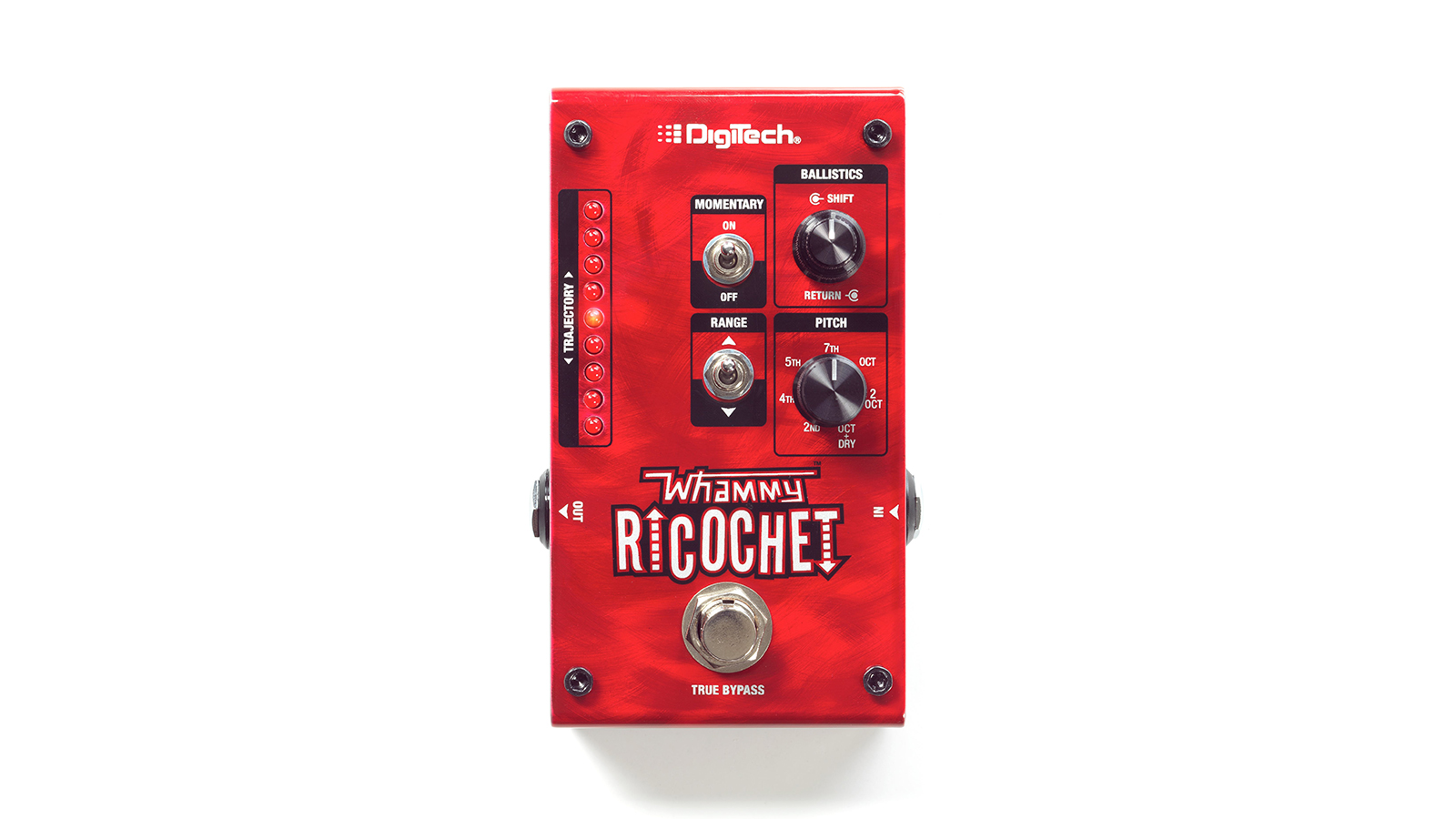
8. DigiTech Whammy Ricochet pitch shifter
Our expert review:
Specifications
Reasons to buy
Reasons to avoid
The Digitech Whammy was the original pitch shifter, and to our minds, it's still the best. The DigiTech Whammy Ricochet has been a mainstay on our pedalboard for a few years now, and it's an incredibly versatile bit of kit and one of our favorite pedals full stop.
It's a small, powerful unit that boasts most of the features of its bigger brother, just without the rocking treadle. This means you can get guitar harmonies, octave up or down sounds, and our personal favorite octave plus dry signal, which lets you double up your tone for heavy riffs or crazy solo sounds.
You can set the footswitch to momentary or latching, so it'll act like a regular pedal and stay on when you press it once, or in momentary mode it will only stay on for however long your foot is on the footswitch. You can also change the ramp-up speed of the effect, which can make for some super fun sounds.

9. Mooer E-Lady flanger pedal
Our expert review:
Specifications
Reasons to buy
Reasons to avoid
There's no love lost between Electro-Harmonix and Mooer, especially after the former successfully sued Mooer for cloning their POG pedal. That's probably why the Mooer ElecLady was rebranded to the still-rather-obvious E-Lady model name.
It's a flanger, inspired by the classic EHX Electric Mistress, that can also cover several chorus-type sounds, making it a pretty versatile first modulation. The reason we're specifically recommending this is twofold – its low price, and tiny form factor.
There are other excellent budget flanger pedals available, but very few are as compact or well-built. If you're not a die-hard EHX fan, then there's little reason not to go for this as your first flanger.
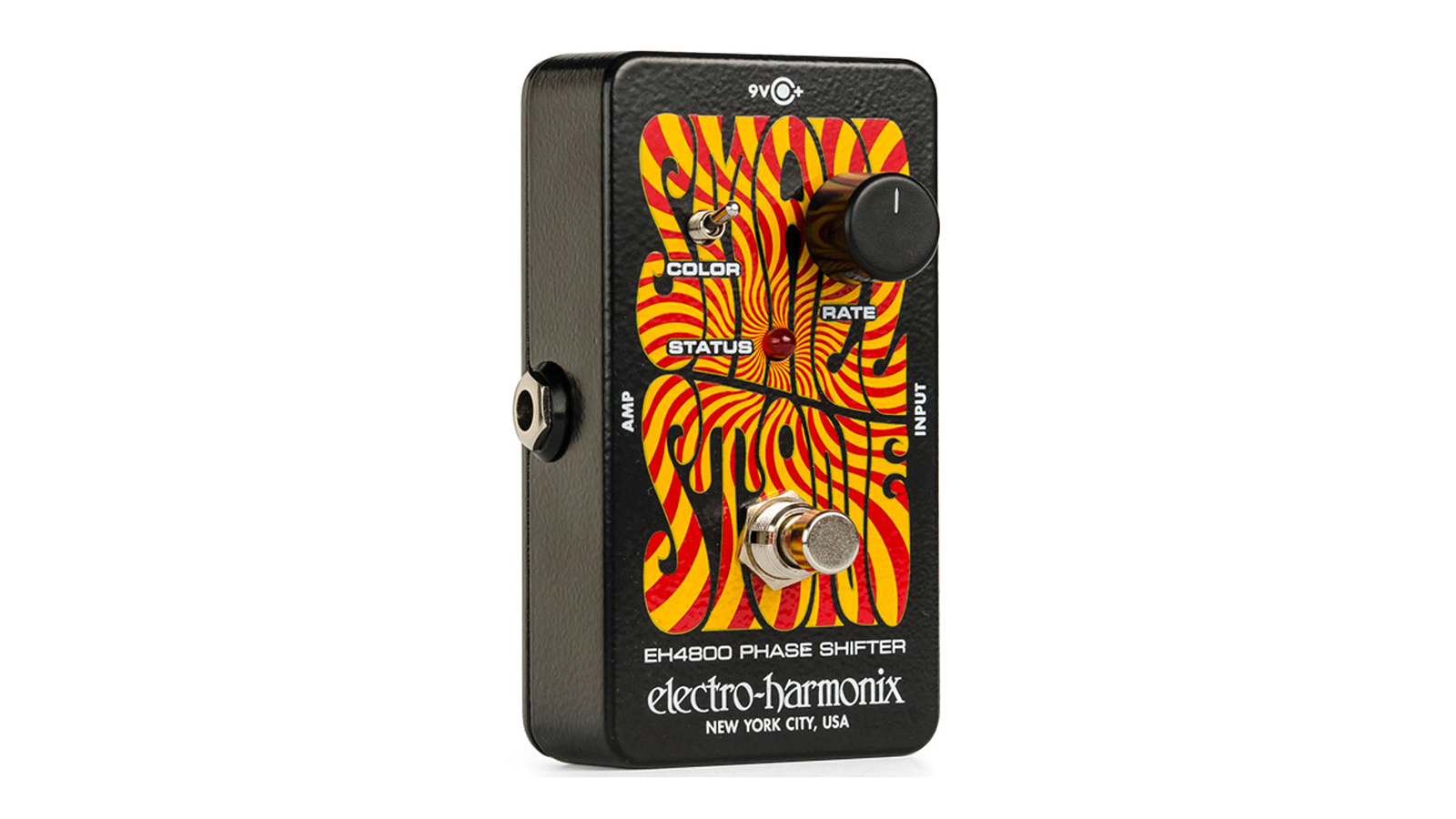
10. Electro-Harmonix Nano Small Stone phaser pedal
Our expert review:
Specifications
Reasons to buy
Reasons to avoid
They might not be quite as small as some of the tiny offerings from Mooer and the like, but EHX's Nano range is certainly a far cry from the sometimes comically large big-box versions that were knocking around when we were youngsters.
Luckily, they're still the same great sounds, and the EHX Small Stone is the phaser against which we tend to benchmark all others. Once upon a time it had so-called 'tone sucking' issues, but the modern versions have resolved that, so you've got rock-solid sounds and true bypass too.
Stick a Big Muff in front of it, and take off for another world. We love that you can dial in subtle wobble to go with your sound, or that proper slow swoosh that sounds like a 747 is taking off in the vicinity.
Best guitar pedals for beginners: Buying advice
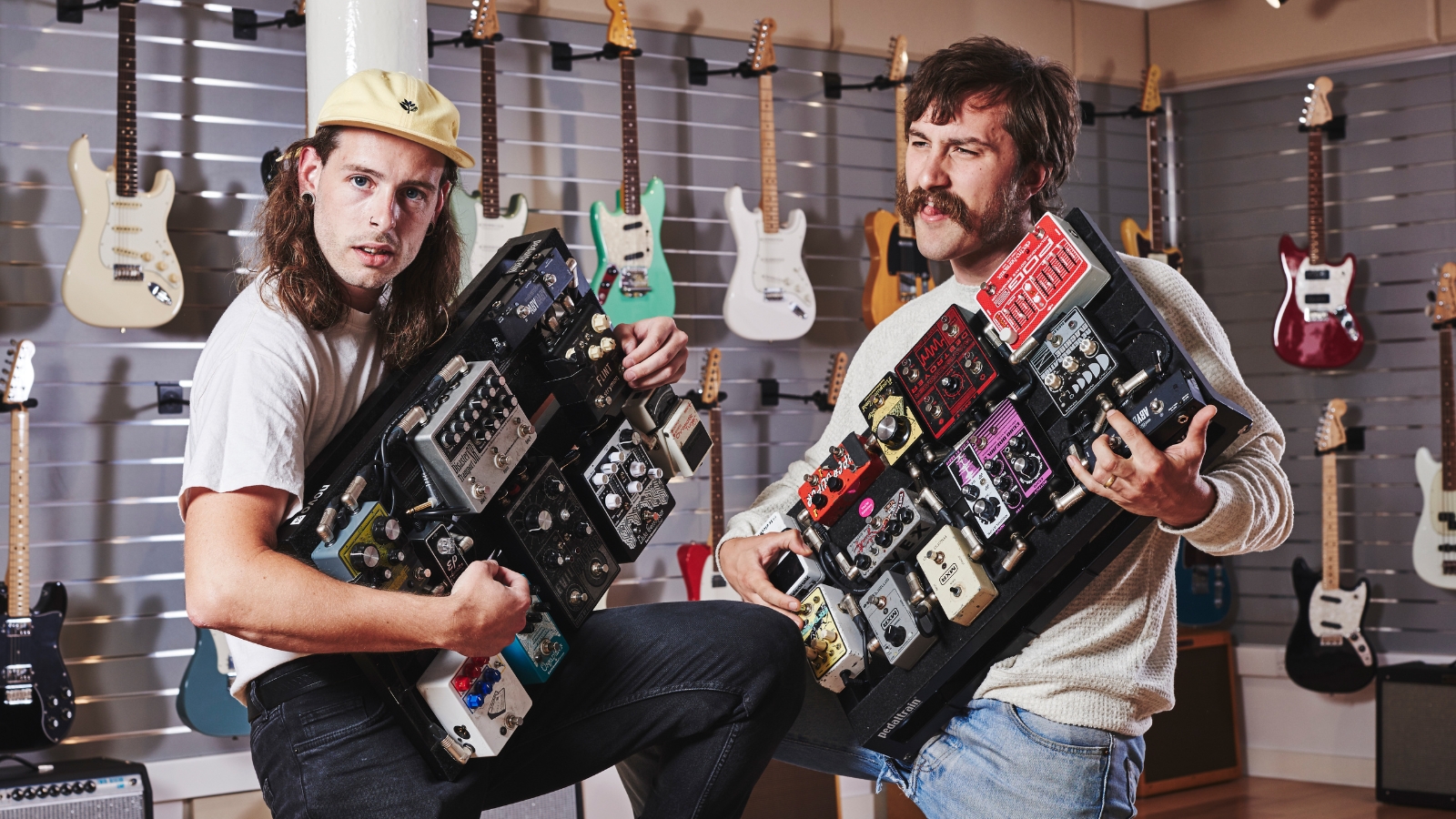
What pedals should a beginner have?
We’ve said it a few times already in this guide, but we always recommend a tuner pedal as the best starting point for beginner guitar players. It’s not the most exciting pedal you can buy, but it’s certainly one of the most useful. As well as keeping your playing in tune most tuner pedals will act as a mute. It will also help you with those crucial first steps of learning the notes of your instrument, as you can always use it as a point of reference if you’re unsure what note you’re playing.
If you already have a tuner, our next recommendation would be an overdrive, distortion, or fuzz pedal depending on the style of music that you enjoy. Overdrive is for blues and classic rock, distortion for hard rock and metal, and fuzz for alternative rock and psychedelic styles, although these aren’t hard rules. Many guitar players will have multiple of these pedals on their pedalboards, as they all have various sonic qualities that are useful.
We’d also encourage you to look at time-based effects, in particular reverb and delay. These effects aren’t just popular for guitar players, they’re used on pretty much every recording ever made whether it’s vocals, drums, keys, or anything else. Delay and reverb pedals can get pretty expensive however, but you can check out our best budget reverb pedals guide if you’re looking for something low-cost.
Do beginner guitarists need pedals?
Not necessarily, there are some famous guitarists like Angus Young and Derek Trucks who get by just fine without any pedals. They are, however, very much in the minority. Even Angus Young uses a wireless unit that allegedly acts as a boost pedal, so whilst you may not expressly need one as a beginner guitarist, in all likelihood you will have some pedals as part of your rig by the time you come to gigging.
If you’re happy with your sound and your progress, then why complicate things by buying a pedal? Likewise, if you feel like something is missing from your sound, then a pedal could be just the thing to add a new dimension to your playing. Use your instincts to decide if a guitar pedal is the right choice for you.
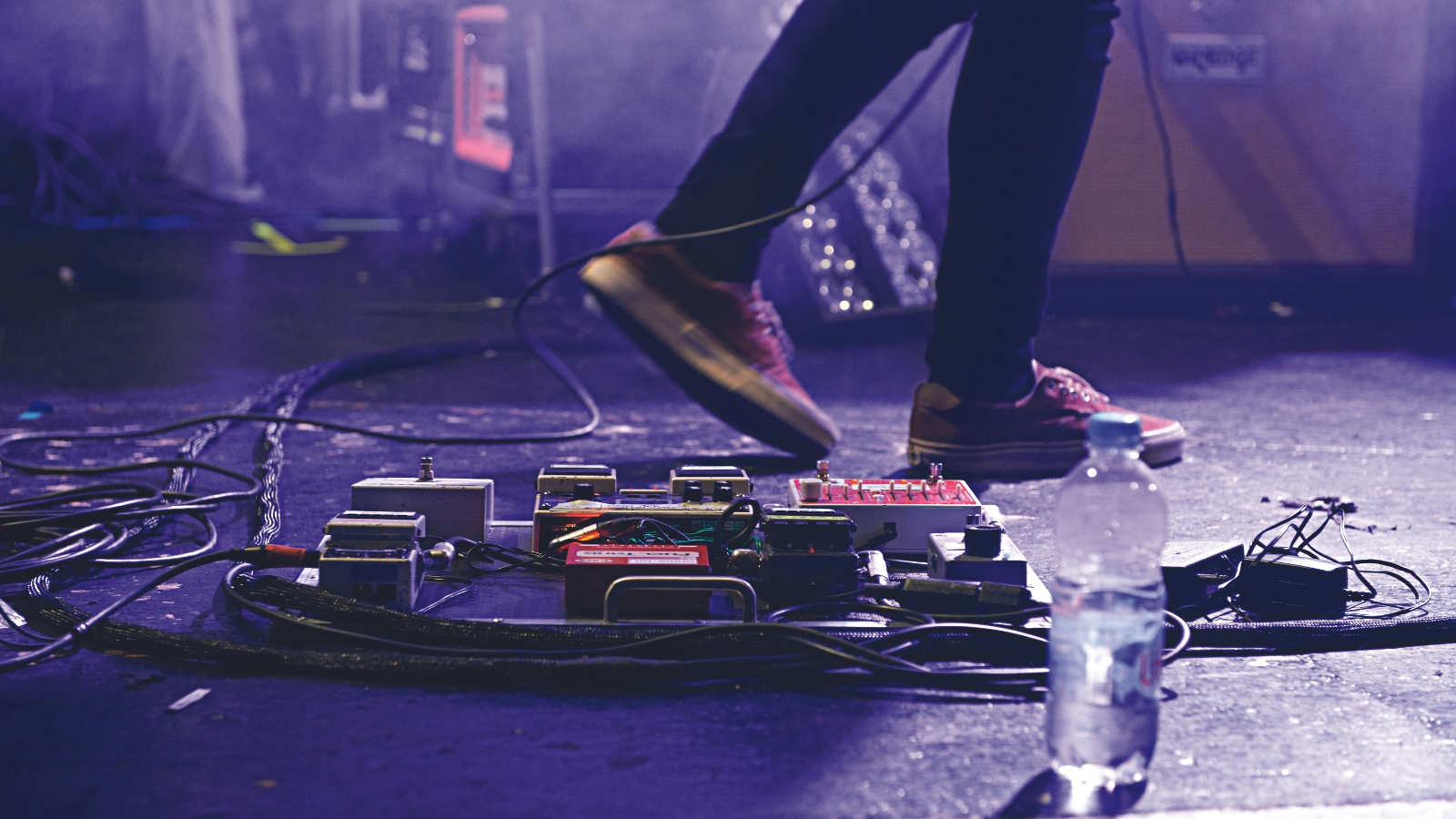
How much should I spend on a guitar pedal?
This is all relative as a guitar pedal can cost anything from $20 right through to $300 and above. For most beginner guitar players, we’re assuming you’re not likely to have loads of cash to spend, so you might want to take a look at our best cheap guitar pedals guide if you’re buying on a budget.
One of the great things about pedals is you can build your collection gradually, buying new pedals when you have the cash, and selling your old or unused ones to generate new funds for future purchases. This is the way most guitar players get started, as it’s hard to know what you actually want until you try it out on your own setup.
There’s no ‘right’ amount of money to spend on a pedal, as you can get just as much joy from a cheap $20 fuzz as you can with the bells and whistles of a $500 amp modeler, so we’d always recommend that you spend within your means, and don’t be afraid to experiment with your pedal choices.
What types of effects are there?
Broadly speaking, there are four main types of effects to focus on, although there are a lot of subtypes that you can delve into as your tastes and needs develop.
FUZZ - Generated by pushing transistors into clipping, this abrasive type of signal mangling defined the tones of early rock and psychedelia, becoming synonymous with players like Jimi Hendrix. Over time, more refined pedals came out, like the Big Muff, a pedal that promised smooth, 'violin-like' sustain that was a far cry from the less-controlled sound of pedals like the Superfuzz, Fuzz Face and Tonebender. Ironically for a fuzz, the Big Muff has more in common with most overdrives than fuzzes in terms of its circuit.
OVERDRIVE - Ushered in by the ground-breaking Ibanez Tube Screamer, the goal of overdrives was simple – to emulate the distinctive sound of clipping or saturation of the guitar signal caused by a tube amp. To some degree, this was achieved, but something else incredibly useful happened – by boosting the guitar signal so that it drove a tube amp into distortion earlier, as well as making the signal more mid-forward, the Tube Screamer also made tube amps sound better too.
DISTORTION - Essentially a more aggressive overdrive, distortion pedals clipped the guitar signal more heavily. Where overdrives like the Tube Screamer or Boss Blues Driver employed 'soft clipping' diodes to clip the guitar signal, distortion pedals tend to employ 'hard clipping' after their amplification circuits, which chops up guitar signals into something that much more closely resembles a square wave.
DELAY - This effect covers a deceptively large spread of pedals. At its core, delay is an echo, and the first units in this area did just that, using tape loops. Pedals using bucket-brigade compact chips followed, and then eventually a jump to digital chips occurred. The thing is, many other types of effects were created by time-based manipulation of signals; flanging was achieved in the early days by running two tape machines and slowing one down; chorus was the same concept but with alternating speed. The more that engineers experimented, the more effect types they created. Digital delays were the real game changer, as they simply recorded and looped a buffer of audio – this in turn led to not only the guitar looper pedal, but also the pitch shifter. Today even the wildest, most out-there delay, glitch and looping pedals, from the Red Panda Particle to the Montreal Assembly Count to Five can trace their origins back to being able to digitally record and replay a buffer of audio.
From these categories you get distortion, delay, modulation and pitch shifting; what remains are mainly utility pedals - EQs, line switchers, noise gates and tuners. For shaping your tone, you're likely to always be relying on some combination of distortion, modulation or delay and amp tone to zero in on the sound that's in your head.
How we choose the best guitar pedals for beginners
Here at Guitar World, we are experts in our field, with many years of playing and product testing between us. We live and breathe everything guitar related, and we draw on this knowledge and experience of using products in live, recording and rehearsal scenarios when selecting the products for our guides.
When choosing what we believe to be the best guitar pedals for beginners available right now, we combine our hands-on experience, user reviews and testimonies and engage in lengthy discussions with our editorial colleagues to reach a consensus about the top products in any given category.
First and foremost, we are guitarists, and we want other players to find the right product for them. So we take into careful consideration everything from budget to feature set, ease of use and durability to come up with a list of what we can safely say are the best guitar pedals for beginners on the market right now.
Read more about our rating system, how we choose the gear we feature, and exactly how we test each product.
Related buyer's guides
You can trust Guitar World
- The best reverb pedals: great options for your pedalboard
- The best guitar tuners: chromatic, polyphonic and strobe options
- The best chorus pedals: top chorus effects for your pedalboard
- The best phaser pedals: our guide to this versatile modulation guitar effect
- The best compressor pedals: enhance your electric guitar tone
- The best wah pedals: add a great tone shaping effect to your ‘board
All the latest guitar news, interviews, lessons, reviews, deals and more, direct to your inbox!
Alex Lynham is a gear obsessive who's been collecting and building modern and vintage equipment since he got his first Saturday job. Besides reviewing countless pedals for Total Guitar, he's written guides on how to build your first pedal, how to build a tube amp from a kit, and briefly went viral when he released a glitch delay pedal, the Atom Smasher.
- Matt McCrackenJunior Deals Writer

